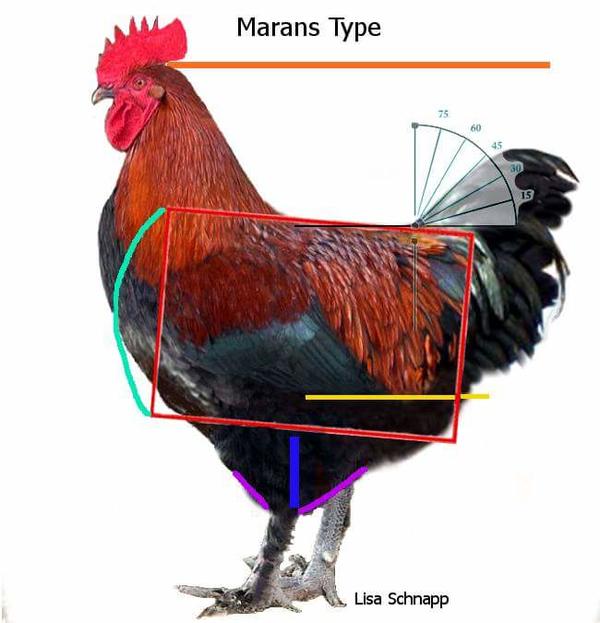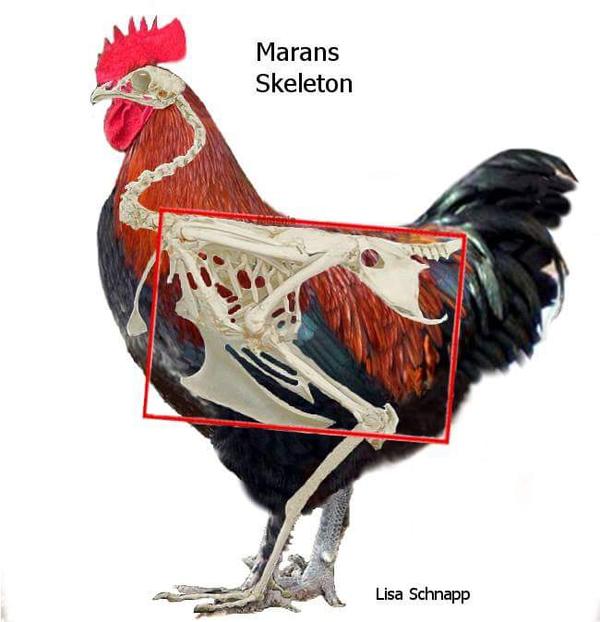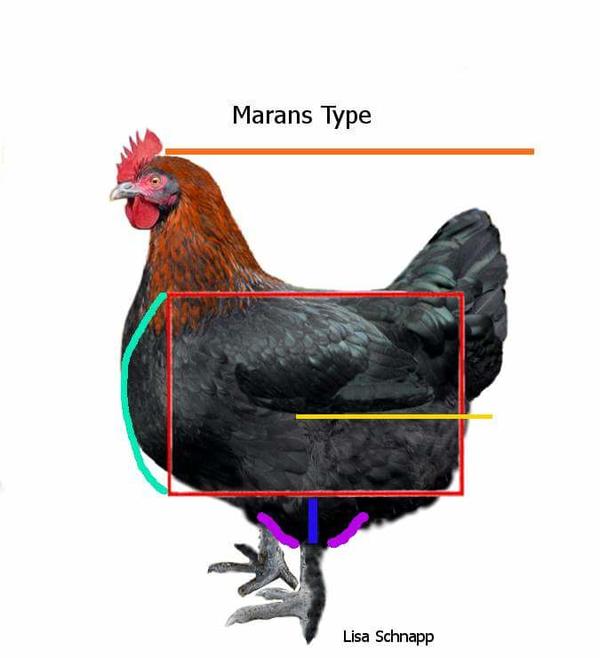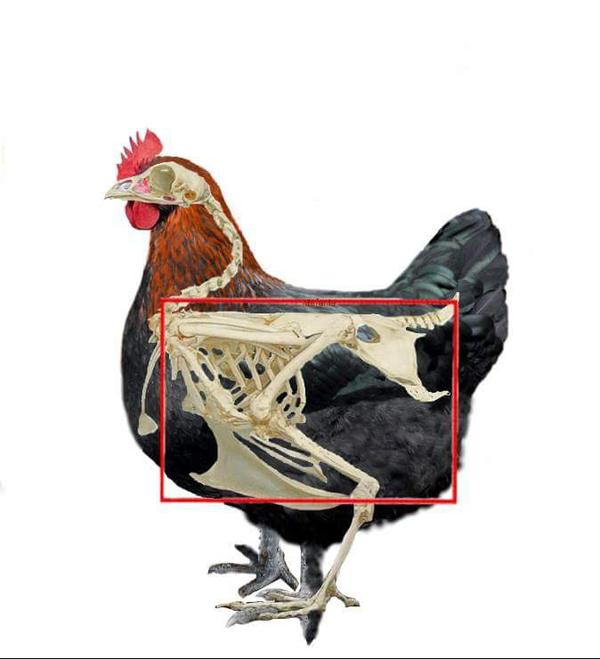Вы здесь
Маран. Общая тема.. Страница 206 из 288
Самые популярные темы
- мини куры
- Юрловская голосистая порода кур
- Французская мясная-кто что слышал или знает?
- Орловская порода кур. Часть 2
- Кучинские Юбилейные куры - проверенная временем...
- Маран. Общая тема.
- Генофонд покупка инкубационного яйца
- ГЕРГЕБИЛЬСКАЯ ПОРОДА КУР (Ундуч)
- Советы начинающим птицеводам от Ираиды Иннокентьевны
- Откорм Бройлеров (ответы на вопросы)


Фестиваль то фестиваль, но под корзинками с яичками явно оценочные листы лежат - значит и эксперты есть на фестивале то
Это все общая культура так сказать. Не так давно еще у нас на дорогах разве мыслимо было, чтобы пешехода пропустили? А сейчас совсем другая картина. Хочется надеяться, что со временем преодолеем не только хамство на дорогах, но и хамство в жизни тоже
Яйцо оценить проблем нет . Хоть круглый год . А вот птица ? Выставки начинаются с осени и по весну .
Петух мощён ;)
Оль! А тоже самое, в профиль?
Пока только голова , всего на днях сфоткаю.
Черно-серебняные, нравится мне цыплят с клушами растить, убрать-покормить, а все остальное - курица.
Type silhouette of the Marans Male
One of the first things mentioned and described in the US Standard is that Marans are a medium sized bird, giving an overall impression and silhouette of being a solid bodied, rustic farm bird. Marans are to appear strong, but not at the expense of appearing coarse. They are substantial birds, but are refined in the details.
Since we know that type is to be the shape of the bird, and Marans are a dual purpose fowl (for both meat and eggs) the Marans body needs to have plenty of capacity for processing food into their hard feathers, solid meat, and the large, showy dark eggs the Marans are renowned for.
So a Marans body conformation is a essentially shaped like a long, wide, deep rectangle. The body shape is not a square, which would show a bird likely to have a short back. The chest cavity should always be deep (especially in the hens), having a wide, deep skeleton when the bird is handled. (See skeleton.) The Marans body is wide, spanning in width from shoulders to tail. Marans should not become narrow at the connection to tail. Narrowness at tail often makes the body look off balanced to be wide in front, but, being narrow bodied in the back.
One of the biggest mistakes is to breed for body length, but not compensate for balancing out the depth needed in chest, making long but narrow bodied birds. Also, the rear end under the back needs to be balanced with the front end equally. Remember, Marans are long, wide, deep birds, giving the appearance of strength. They have good sized keels and rounded, meaty breasts, but not weak rear ends lacking substance. Marans are all about substance. Marans should not be narrow, short legged birds with wide, long bodies. Marans are medium sized birds- on the larger side of medium. So the length of shanks should appear balanced to the body to help carry their substantial size and solid weight.
The males are wide at the shoulders, and long backed. Across the back, the wideness appears as flatness, but, the angle gradually tilts slightly down to the rear end in a modest degree of angle. The angle should not be a steeply inclined angle. However it is more lightly more inclined in angle than that of the females, which is straight across or slightly inclined down to tail. A fist should be able to be fit between the shanks showing good width.
The tail is FULL (not narrow), rather short in length (highest point should not peak above the head line). The angle is carried at an angle of 45-65 degrees above the horizontal line when relaxed. The main sickle tail feathers are broad, overlapping feathers that are shorter than average, but not pinched at top or twisted, or crossing feathers. Nor should there be wide gaps of space between tail feathers. Ideally sickles should barely peak over the edges of a full, wide tail, and below the head.
The tail when viewed from behind, should be an open clam. It should be "V" shaped," to look sufficiently wide and give the appearance of "fullness." This width in the rear end of the bird gives the appearance of more full body balance and substance.
Here we have our ideal male showing us areas of the Marans male to be aware of:
Red rectangle: The body rectangle should be deep and long, especially on back, not across chest (off balance bird). Bird's body should fill a wide rectangle.
Mint curve: Well rounded chest breast muscle, but not overly large or fat, to be in balance with the rest of the body.
Blue line: The body is well balanced from front to back. Compare from center of shanks- if the front body portion is longer, or rear is smaller, body is off balance.
Purple V lines: Nice plump thighs on shanks that balance to the weight of the upper body.
Yellow line: Wings in the mid zone, point to the vent. They should not be high or low in angle unless the bird is hot or resting.
Tail Angle lines: Tail angle should be 45-65 degrees when not at alert. Measure angle from the spot at back where aback and tail connect.
Orange line: The head is always higher than the tail or the tail is too long and high.


Type silhouette of the Marans Female
In the US Standard, one of the first things mentioned is the overall impression and silhouette of the Marans breed being strong and solid bodied, but not coarse. They are a rustic farm bird, but one that is refined in its details.
Type is the shape of a bird, and it defines the breed. Every variety of Marans follows the same type across the board. You have to build the foundation before painting the outside. Marans are a dual purpose fowl, equally desired for both meat and eggs, so the hens need plenty of abdominal capacity in the abdomen for processing food into their hard feathers, solid meat, and so they can lay their large, showy dark eggs.
A Marans hen's body conformation is essentially shaped like a long, wide, deep rectangle. Think like a long, wide, deep width brick. It is important to make sure the hen's conformation is superb, as the females control size and type to her future cockerel sons. The body shape should not be a square shape, which would show a bird likely to have a too short back, or truncated topline. Or a "U" shaped topline.
The chest cavity of the females should always be deep (especially in hens). You always want to use the best male you can have in breedings, but, the female actually controls and passes down the genes for size, type and often tail angle to her young, especially her cockerels. Females should have a long, wide, deep skeleton felt when the bird is handled. (See skeleton.)
The Marans female body is wide, like the male. Wide, flat shoulders, spanning in width and depth from shoulders gradually along to tail. Marans should not suddenly become narrower or pinched at the area of the connection to the tail. Narrowness and pinched at the top of the tail often makes the body look off balanced. To be wide in front, but, being narrow bodied in the back is undesirable, and will be inherited by the hens cockerel sons. So, do not forgive a hen for undesirable body traits or DQs just because she looks wide in front, or lays dark eggs. Look at the whole package. Judge her as a whole and be as diligent about culling flaws as you might be with the males.
Often, one of the largest mistakes in Marans is to breed for body length and a long topline, but not taking in mind compensation for balancing out the depth as needed in the chest. Thus making long, but narrow bodied birds. Also, the rear end (at abdomen, under the saddle area of back) also needs to be balanced with the front end, equally. Think of two equal squares, one located at each side of the center of the shanks. Are they the same?
Marans females are to be long, wide, deep bodied birds. Giving the appearance of strength, and substance throughout the form. Marans have good sized, solid feeling keels. Strong, broad, and full meaty breasts. The shape should be well rounded when viewed from both the front and side of bird- she will pass this trait also to cockerel sons. Females should not have weak abdominal capacity in the abdomen, or lacking substance in the rear end... it makes the bird's appearance and performance in egg laying lack overall substance. Marans are all about substance. As heritage birds, Marans should look good, but they should also lay a fair amount of dark eggs during their fairly long laying span.
Marans hens should never be small or narrow as breeders, nor be short-legged birds having long, wide bodies. Marans are in the Standard as medium sized birds- but they are on the larger scale of medium. Shanks are to be medium in length (according to the Standard) so, shank length is to be keeping in balance with the rest of the Marans medium sized body... so shanks are not to be short legged and well balanced to the females body to help carry her solid weight and substantial size. Hens should not have a narrow spanning shank width.
Since the females are wide at the shoulders like the males, and gracefully long backed, make sure to remove hens with large saddle cushions (or long saddle feathers) which may change the look of her topline angle, and be inherited by sons and daughters. Spanning down the back, the wideness appears as flatness like the males, but, the angle is straight across or gradually tilts down very slightly toward the rear end in a modest degree of angle than the males. The angle should not be a steeply inclined angle. Like the males, a closed fist should be able to be fit between the shanks showing good width.
In the US Standard, the tail of Marans females is FULL (not narrow, impinged, pinched or twisted). Opening to a "V" shaped back view. Tail feathers are rather short in length (highest point should never peak above the head line). The female's tail angle is also carried at an angle of 45-65 degrees above the horizontal line (when relaxed).
The main tail feathers of the female are broad, overlapping feathers that are shorter than average... but never flat, pinched at top or twisted, or have crossing of feathers. Nor should there be wide gaps of space between tail feathers. Ideally, hen top tail feather sickles should be about the size of the full, wide tail, but, well below the head.
Here we have our ideal female showing us areas of the Marans females to be aware of:
Red rectangle: The body rectangle should be wide, deep and long, especially the area spanning down and across back. Chest should not be longer across chest than rear end (showing an off balance bird). Bird's body should fill or nearly fill up a wide rectangle, not a narrow rectangle.
Mint curve: Well rounded and developed chest breast muscle, but not overly large or fat, should be in balance with the rest of the body, but viewed as a whole, the rest of the bird's balance taken into account.
Blue line: The body is proportioned to be well balanced from front to back. Compare body from center of shanks- if the front body portion is longer, or rear is smaller by much or little, the body is off balance.
Purple V lines: Plump thighs on shanks that balance to the size and weight of the upper body.
Yellow line: Wings in the mid zone, point to the vent. Wings should not be held in a high or low in angle unless the bird is overheated or resting.
Tail Angle lines: Tail angle should be 45-65 degrees when not at alert. Measure angle from the spot at back where back and tail connect. This body to tail connection area should be wide.
Orange line: The head is always higher than the tail, or the tail is too long and high.



Поменяла своего черно-серебристого петушка на такого-же французского, постарше немного. Пока на карантин в клетку посадила. Попозже сфотаю.
Ну наконец то , первое яйцо от ЧС , вес 48 гр. , молодки от 28.02.2018 г.
, молодки от 28.02.2018 г.
У меня некоторые тоже есть в такую крапинку, а некоторые крупными кляксочками
[/quote]
 ПОЗДРАВЛЯЮ!
ПОЗДРАВЛЯЮ!
:[/quote]
спасибо
Почикала сегодня одного сплэш и одного голубого, пора сокращать петушатник, лидеры нарисовались, в сплэшах только загвоздка - выбрать двух из трех: ну никак рука не поднимается самого крупного приговорить, но у других обоих гребни лучше Ыыыы
Ыыыы
Вообще в маранах размер имеет значение?
ИМХО: В любых породах не нужно оставлять самых крупных. Поломают кур. Я так нарвалась на виандотах и пушкинках. Оставляют на племя всегда петухов среднего размера и веса. Куры целее будут.
Выскажу свое мнение . Во первых на каждую породу есть свой стандарт , и надо придерживаться к нему . Ну а если выращиваете птицу на мясо , то зачем оставлять мелких петушков, не понимаю . Ну а если оставили крупного петушка , типа у пушкинских , так и курочек ему дайте штук 15 , он справится , и спины никому не поломает .
Точно! И как я это из виду упускала? Спасибо огромное!
Речь же не о мелких! Речь о средних стандартных! А этот сплэш у меня и правда прямо мастодонт, уже малинов догонять начал Так что все правильно - оставлю достаточно крупного и среднего, а мелких в сплэшах не было вообще. В черных и голубых были, а сплэш и девки все в теле и пацаны тоже. Сегодня убрала с медью приличной в крыле, потому как для моих расцветок меди не нужно
Так что все правильно - оставлю достаточно крупного и среднего, а мелких в сплэшах не было вообще. В черных и голубых были, а сплэш и девки все в теле и пацаны тоже. Сегодня убрала с медью приличной в крыле, потому как для моих расцветок меди не нужно 
Да уж , женскую логику нам не понять .
Так и курки, если крепкие, то никаких проблем не будет, оставляя крепкого и мощного петушка, курочки то тоже такие родятся.
Я за крупных!) Стандарт нам о чем говорит? Вот его и придерживайтесь.
Кто скажет чьё яйцо. Посветлело.
Не понятен Ваш вопрос Это считается светлое?
Это считается светлое?
Да, и очень.
И чье же такое мелкое?
Ребята,что за Петя????))))
Михаил,вы можете на примере своего фото найти похожую птицу?
Дочь этого петра.
Сегодняшний "урожай" , одно пришлось помыть - все в помете было.
Ну нет конечно, на мой взгляд 6-7
Кляксочки на них - это 9